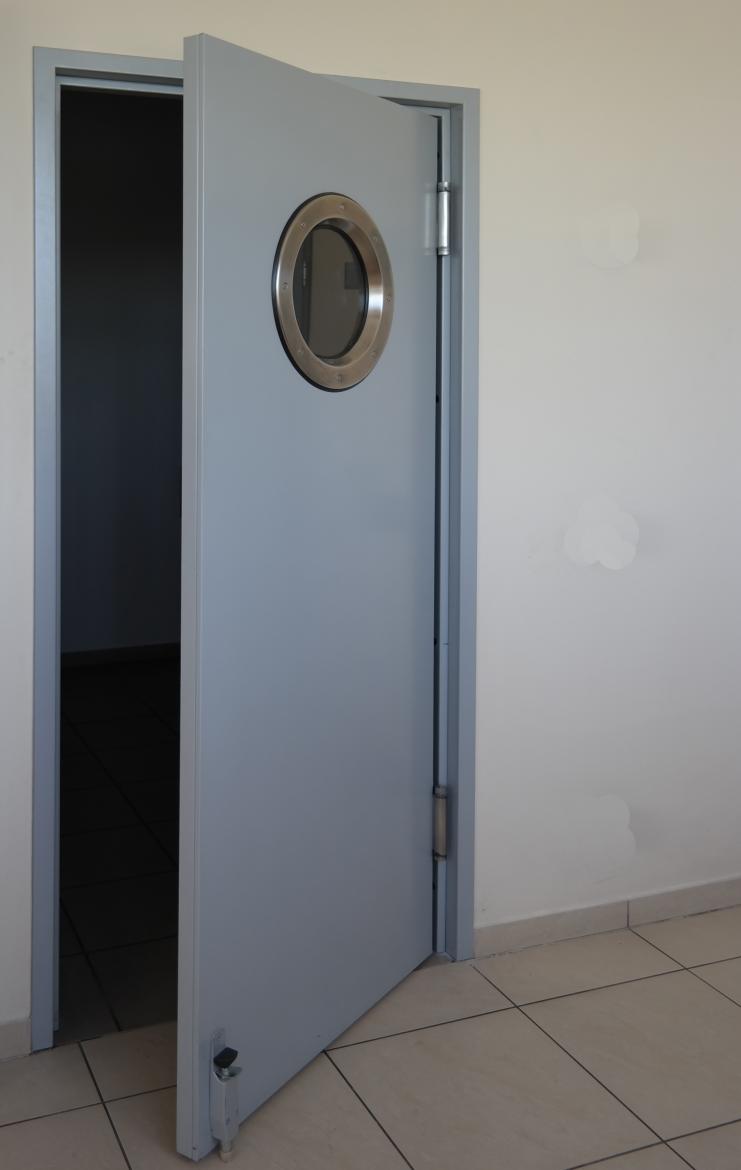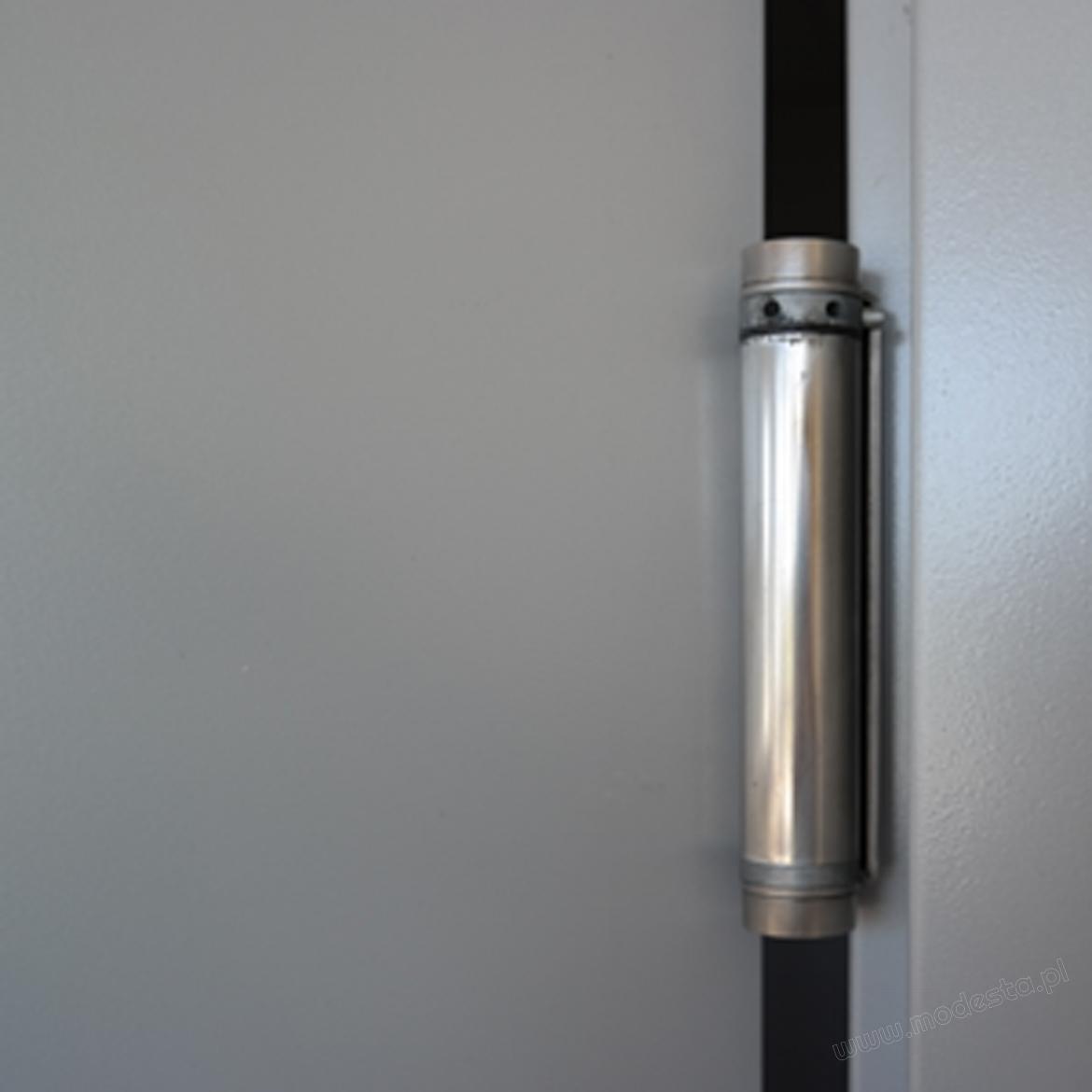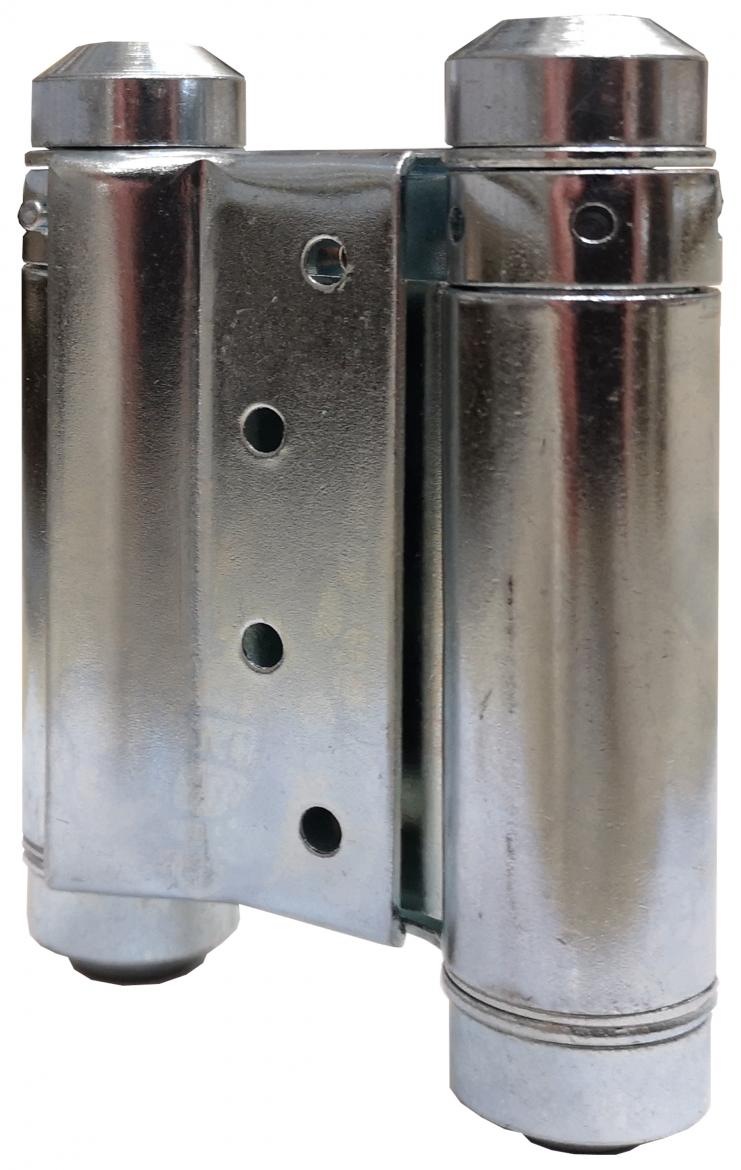multi-purpose steel swinging doors
Steel swinging doors are a rather atypical variant of interior doors. They are distinguished from traditional doors by their unique method of opening. Thanks to a non-rebated construction of the leaf and frame, and through the application of special hinges, these doors can be opened in both directions.
Universal steel swinging doors
on special, double hinges open quickly, lightly and fluidly in two directions – to the exterior and to the interior of the room closed off by them, creating conditions for convenient passage. The application of a spring mechanism in the hinges of the swinging door enables the self-closing function; after opening – independently of the direction of opening – the leaf of the swinging door returns to the closed position by itself. The leaf of a steel swinging door works over a very wide radius, from 180° to 360°, under the assumption that it opens in both directions, at least to a right angle or even up to the wall. Such doors often afford the maximum opening clearance, which makes them perfect for light applications in passages with high traffic intensity, where both the cost and aesthetic matter. Due to their light construction, universal steel swinging doors should not be installed in corridors where heavy loads are transported, e.g. for forklifts.



The advantages of steel swinging doors
arise from the specific manner by which they are opened and closed – leafs are fastened to frames in a way enabling their free rotation to the exterior and interior with respect to the axis of the hinges. Because of this, they are very convenient to use, since they open lightly in both directions through both pushing and pulling. Thanks to their characteristics, swinging doors separate rooms perfectly while simultaneously ensuring fluid traffic between them. Doors of this type insulate rather well, limiting air exchange and minimizing noise, and yet do not impede movement by opening in two directions and providing the maximum clearance of passage. Due to the construction of universal, steel swinging doors, they are not fire-resistant and should not be used instead of doors certified for a specific fire insulation and resistance class. It would certainly also be difficult to determine the thermal and acoustic insulation of such doors, however, they get high marks when it comes to mechanical durability. The solid construction of the leaf ensures the proper rigidity, and along with strong, two-directional hinges, universal steel swinging doors are an excellent solution in places with high traffic intensity, calculated for a high number of use cycles. When precisely analyzing the specific operation of steel swinging doors, it should be highlighted that the installation of such doors requires a large amount of space to accommodate the two-directional swinging radius of the leaf on both sides of the door.
The construction of universal steel swinging doors
does not deviate substantially from that of traditional, multi-functional steel doors, besides the unique hinging scheme. The leaf of a swinging door has a standard thickness of 40 mm, and similarly as in the case of sliding doors, it is made in a non-rebated version. It is formed by cold bending of galvanized steel sheet with a thickness from 0.6 to 0.75 mm, or from stainless steel sheet with a thickness of 0.75 mm. The basic filling is a very dense cardboard stabilizing structure in a honeycomb configuration, ensuring the appropriate rigidity of the leaf panel. The technology of manufacturing swinging doors also provides for filling in the form of mineral wool or EFS polystyrene panel. The filling is glued on both sides to the leaf’s sheathing, endowing it with the proper static properties and flatness. Thanks to this, the exterior surface of the leaf is smooth and exceptionally easy to keep clean. From the side of the hinges, the leaf is reinforced by wooden sections for the purpose of ensuring the rigidity of the door panel and preventing the hinges from being ripped out of the leaf when overloaded. The door frame is also made in a non-rebated version, so that the leaf can work in two directions. Special swinging hinges are fastened rigidly to the door frame, ensuring many years of failure-free operation, even under the assumption of frequent use and minimal maintenance.
The application of steel swinging doors
is optimal in places where rooms must be separated from one another, yet fluid traffic and easy access from both sides must be preserved. Universal steel swinging doors find applications, above all, in gastronomy, where they separate the production/delivery part (kitchens, bars and restaurant backrooms) from dining rooms. Another area where swinging doors can be applied are healthcare and pharmaceutical facilities: In hospitals and clinics, they are installed in reception areas and dispatch rooms, and in pharmacies, they separate the sale floor from the rooms where stock is kept. Besides gastronomy and healthcare facilities, steel swinging doors are an excellent product for stores, where they separate the sale floor from the warehouse part. Doors of this type are also useful in office buildings for closing off social rooms.
Steel swinging doors are even encountered in residential buildings. In multi-family apartment buildings, they are installed in the common parts of buildings, e.g. coach houses. In single-family homes, they can be installed between a room and a bathroom – they are also used as doors to laundry rooms. In many designs, they are appropriate for application in passages between the kitchen and dining room.
Due to their durability and construction facilitating movement, universal steel swinging doors are increasingly frequently applied in workshops and post offices as well as in forwarding centers.
Additional equipment for steel swinging doors.
Besides special, two-directional hinges, swinging doors are often devoid of fittings, however they can optionally be fitted with a one- or double-sided handle making it possible to open the door leaf not only through pushing, but also by pulling. A hook lock with a one- or double-sided insert, locking the door in the starting position, can also be mounted in the leaf of a swinging door. Another important piece of optional equipment are bumpers for leafs in the form of strips made of stainless steel sheet. Kick-plates are installed on the lower edge of the leaf, and push-plates on the leaf are installed at a height of 1050 mm from the bottom edge. The application of kick- and push-plates on the leafs of swinging doors affords excellent protection against impacts in the case of intensive traffic. The most frequently applied piece of optional equipment for steel swinging doors is glazing of the leaf, making it possible to observe the space behind the door. The glazing is made as rectangular or in the form of a porthole. It provides visibility of the space behind the door, raising the level of safety, preventing collisions and reducing the risk of accidents. Glazings of steel swinging doors are filled with laminated safety glass or a single pane of tempered glass. The application of a doorstop blocking the leaf in the open position may improve the convenience of using swinging doors. The doorstop is installed on the bottom edge of the leaf and extends in the direction of the floor, blocking the leaf in the open position at a 90° angle or any desired position.
